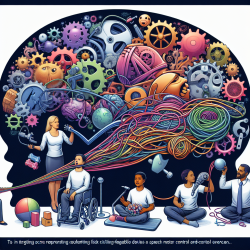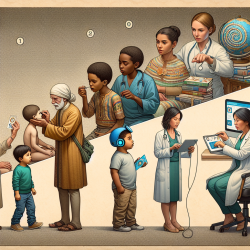Introduction
In the rapidly evolving landscape of technology, the integration of machine behavior analysis into practice has emerged as a pivotal area of exploration. The research article "Some Characteristics and Arguments in Favor of a Science of Machine Behavior Analysis" provides a comprehensive framework for understanding and leveraging machine behavior to enhance outcomes in various domains, including online therapy services for children. This blog delves into the key insights from the article and discusses how practitioners can harness these insights to improve their skills and foster better outcomes for children.
Understanding Machine Behavior Analysis
Machine behavior analysis is a proposed fifth domain of behavior analysis, focusing on how machines interact with and produce changes in their external environment. This domain emphasizes the need for a systematic approach to studying machine behavior, drawing parallels with traditional behavior analysis methodologies. The article argues that this emerging field is essential due to the omnipresence and impact of machines on human behavior, highlighting the limitations of engineering alone in explaining and controlling machine behavior.
Key Characteristics of Machine Behavior Analysis
The article outlines five basic characteristics of a science of machine behavior analysis:
- Centered on Machine Behavior: Focuses on fabricated apparatuses that produce observable changes in the environment.
- Relevant: Studies machine behavior that produces significant environmental changes for its user.
- Replicable: Ensures that procedures are described in detail for replication, using methodologies that produce reproducible results.
- Consistent with Behavior Analytic Terminology: Utilizes consistent terminology to describe the impact of environmental variables on behavior.
- Grounded in Philosophical Assumptions: Adheres to selectionism, determinism, empiricism, parsimony, and pragmatism.
Implications for Practitioners
For practitioners, particularly those in the field of online therapy services, integrating machine behavior analysis can lead to significant improvements in service delivery and outcomes. Here are some practical steps to consider:
- Incorporate Data-Driven Approaches: Utilize machine behavior analysis to inform data-driven decisions in therapy planning and execution.
- Enhance Interdisciplinary Collaboration: Work closely with engineers and data scientists to develop and refine therapeutic tools that leverage machine learning and behavior analysis.
- Focus on Replicability: Ensure that therapeutic interventions are replicable and adaptable to different contexts and populations.
- Embrace Continuous Learning: Stay informed about advancements in machine behavior analysis and its applications in therapy.
Encouraging Further Research
The article emphasizes the importance of ongoing research and debate within the field of machine behavior analysis. Practitioners are encouraged to engage in research activities that explore the intersection of machine behavior and therapy, contributing to the development of evidence-based practices.
Conclusion
As technology continues to advance, the integration of machine behavior analysis into practice holds immense potential for enhancing outcomes in online therapy services. By embracing data-driven approaches, fostering interdisciplinary collaboration, and engaging in continuous learning, practitioners can significantly improve their skills and contribute to the well-being of children.
To read the original research paper, please follow this link: Some Characteristics and Arguments in Favor of a Science of Machine Behavior Analysis.










